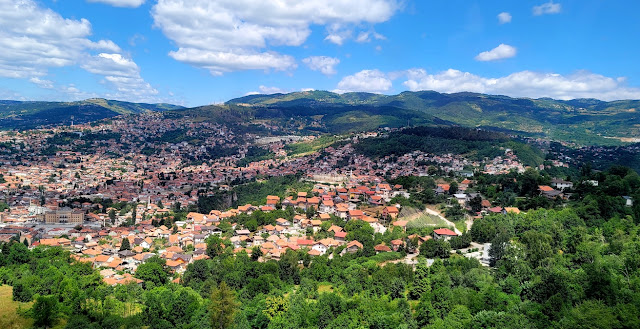This post features Sarajevo and talks about the strange political set up of Bosnia-Herzegovina.
Bosnia-Herzegovina (Pop 3.28m, Highest Peak 2,388m) is 75% the size of Tasmania. It is politically strange. It is actually 3 nations in one: the Federation of Bosnia and Herzegovina, Republika Srpska and the Brčko District, which is governed by its own local government. The UN only recognises the first and all three have a President, which means that Bosnia-Herzegovina is governed by 3 Presidents but only one Prime Minister and one Parliament. Weird and as a result everything here takes ages to decide especially public works. The country is an applicant for membership in the European Union and has been a candidate for NATO membership since April 2010.
Bosnia-Herzegovina has had a tumultuous history. I will cover this in a separate post so I can get images to you in the meantime. In summary, World War I was triggered from one event in Sarajevo (described below) and the separation from Yugoslavia was extremely bloody resulting in Independence in 1992 but a terrible genocide of 8,372 Muslim Bosnians killed in 3 days in Srebrenica in on 11 July 1995 – we were in Sarajevo on 11 July 2022 with solemn and heartfelt tributes all over the city. Today, the north of the country is Bosnia with a Muslim majority of 50.7% and the south towards Croatia is mainly Catholic Christian. There are Orthodox Christian Bosnian-Serbs still here all over the country but they are a very small minority. Bosnian is the main language, which is a dialect of Serbian. Relations between Bosnia-Herzegovina and Serbia are still strained and a little less so with Croatia. It is amazing that Yugoslavia did not dissolve earlier – these cultures are quite different, mainly in religion and lesser in food, dance and language. Sarajevo is the main city of Bosnia whilst Mosar in the south is the stronghold of Herzegovina, which is also the wine capital of the entire nation (if you can call it that !!!)
Sarajevo (Pop 275k, Elev 539m, Founded 1461) is the only city in the world with 5 major mountains within 30min of the city centre. For this reason, it was chosen as the first communist city in the world to host the 1984 winter Olympics, albeit in what was then Yugoslavia. Sarajevo has come a long way since 1995 when much of it was destroyed in the Yugoslavian separation and subsequent Serbian attacks of 1995. It has several modern shopping centres and a quaint Old Town but there remains many war-damaged building never restored and many abandoned. It is a good-looking city with wide boulevards in and out of it. Many restaurants and cafes line the main river-front where opposite the “Latin Bridge”, on a corner, Archduke Franz Ferdinand of Austria, heir presumptive to the Austro-Hungarian throne, and his wife, Sophie, Duchess of Hohenberg, were assassinated on 28 June 1914 by Bosnian Serb student Gavrilo Princip, shot at close range. Princip was a member of a student revolutionary group that later became known as Young Bosnia. The political objective of the assassination was to free Bosnia and Herzegovina of Austria-Hungarian rule and establish a common South Slav ("Yugoslav") state. The assassination precipitated the July Crisis, which led to Austria-Hungary declaring war on Serbia and the start of World War I. Amazing. World War I literally began on a street corner !!!
On the bright side, Sarajevo is a city hell bent on lifting its head above political waters and becoming a cultural capital that many would be please to visit.
Here is your opportunity to visit a city that has emerged from the ashes…


























No comments:
Post a Comment